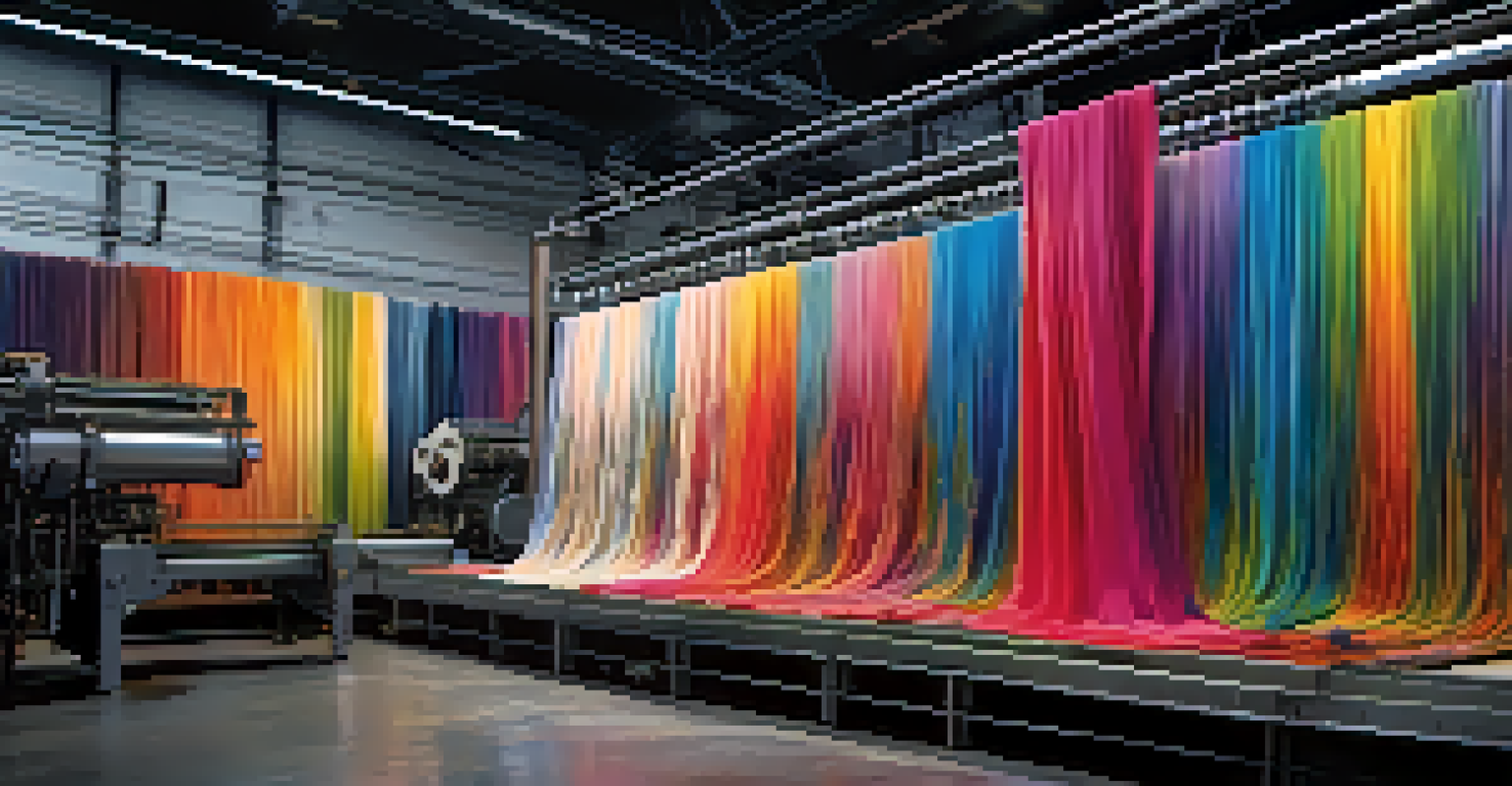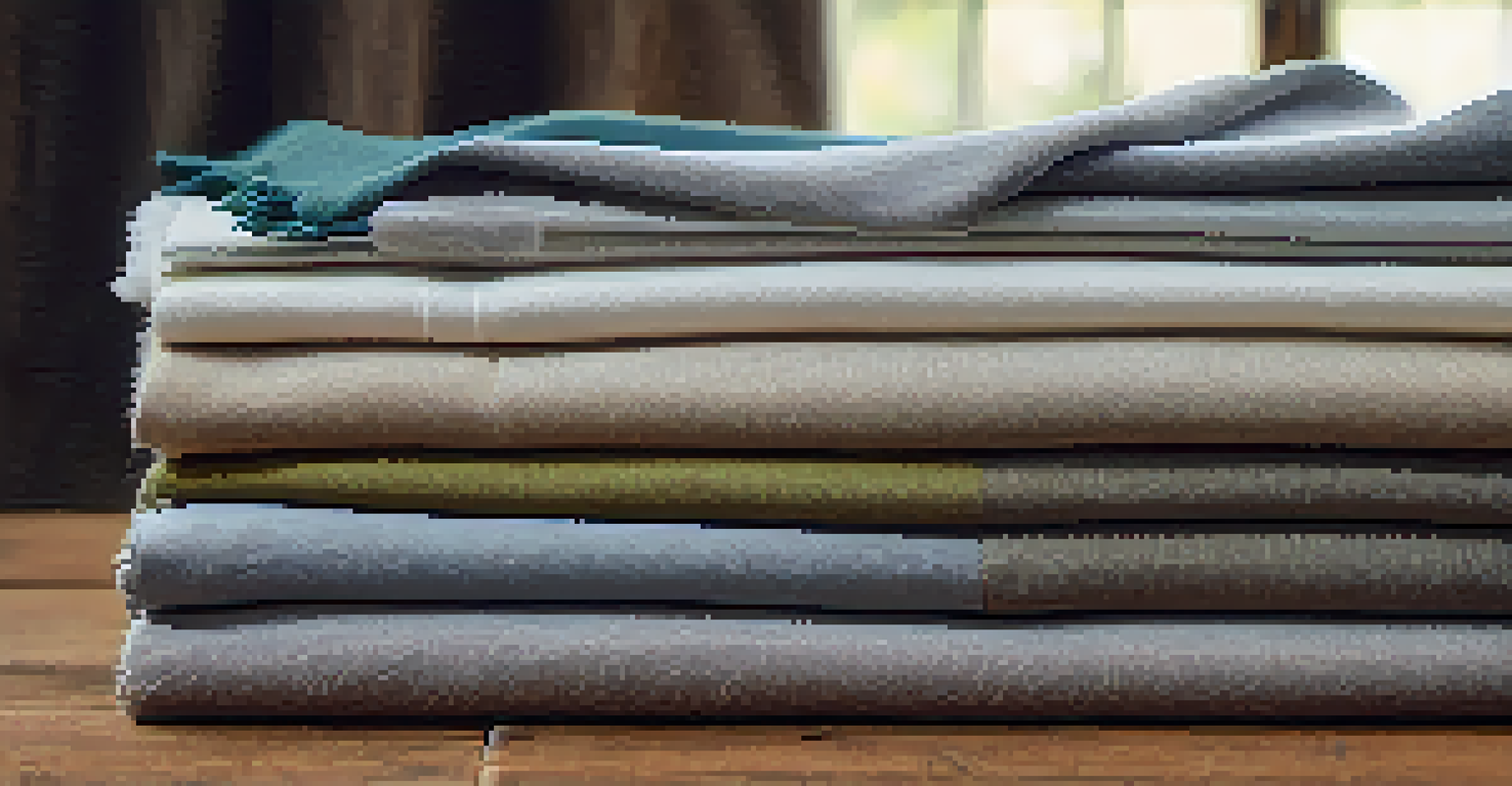Water Usage in Fashion: Addressing Scarcity Through Innovation

Understanding Water Scarcity in the Fashion Industry
Water scarcity is an ever-growing concern, especially in industries like fashion. The process of making textiles requires an enormous amount of water, from cotton cultivation to dyeing fabrics. This high water usage not only strains local resources but also impacts communities and ecosystems.
Fashion is the second most polluting industry in the world, right after oil. We need to rethink how we consume and produce clothing.
For instance, producing just one cotton t-shirt can consume over 2,700 liters of water, which is enough for one person to drink for two and a half years. As climate change exacerbates water scarcity in many regions, the fashion industry must recognize its role in this challenge.
By understanding the gravity of the situation, brands and consumers can start advocating for more sustainable practices. Awareness is the first step toward innovation, leading to solutions that respect both the environment and the communities that rely on these precious resources.
The Environmental Impact of Traditional Fashion Practices
Traditional fashion practices often overlook the environmental cost, particularly water usage. Processes like dyeing and finishing textiles are water-intensive and often pollute local water sources with harmful chemicals. This not only depletes water supply but also jeopardizes the health of nearby ecosystems.

Take the example of the fashion industry in countries like India, where rivers have become polluted due to dye runoff. The local communities that depend on these waterways for drinking and agricultural needs are severely affected. Such scenarios highlight the urgent need for change in industry practices.
Water Use in Fashion is Alarming
The fashion industry consumes vast amounts of water, with producing a single cotton t-shirt requiring over 2,700 liters.
Addressing these environmental impacts requires a commitment from brands to adopt more sustainable practices. This includes investing in technology and methods that reduce water usage while maintaining quality, thus paving the way for a more responsible fashion industry.
Innovative Technologies Reducing Water Usage
Innovation is key in addressing water scarcity in fashion. New technologies are emerging that drastically reduce water consumption during the production process. For example, some companies are now using waterless dyeing techniques that rely on supercritical CO2 instead of water.
The greatest danger for most of us is not that our aim is too high and we miss it, but that it is too low and we reach it.
These methods not only conserve water but also eliminate the need for harmful chemicals typically found in traditional dyeing processes. This innovation represents a significant shift toward sustainability, showing that it's possible to create beautiful textiles without depleting our natural resources.
As more brands embrace these technologies, the industry can begin to shift toward practices that respect both the planet and its inhabitants. By prioritizing innovation, we can set a new standard for how fashion interacts with water resources.
Sustainable Materials: A Key to Water Conservation
One of the most effective ways to tackle water usage is by choosing sustainable materials. Fabrics like organic cotton, Tencel, and hemp require significantly less water to produce compared to traditional materials. Opting for these alternatives can lead to a substantial reduction in the overall water footprint of fashion.
For instance, Tencel, which is made from sustainably sourced wood pulp, uses a closed-loop process that recycles water and solvents during production. This innovative approach not only saves water but also minimizes environmental impact, making it a win-win for both consumers and the planet.
Sustainable Materials Matter
Opting for sustainable fabrics like Tencel and organic cotton can significantly reduce water consumption in the fashion industry.
By shifting towards sustainable materials, the fashion industry can not only help conserve water but also inspire consumers to make more eco-friendly choices. This collective effort can drive change, encouraging more brands to adopt sustainable practices in their production processes.
The Role of Consumer Awareness and Behavior
Consumer awareness plays a pivotal role in addressing water usage in fashion. When consumers prioritize sustainability, they influence brands to adopt more responsible practices. Simple actions like choosing to buy less or opting for sustainable brands can make a significant difference in water conservation.
For example, many consumers now research brands before purchasing, looking for those that prioritize water-saving technologies and sustainable materials. This shift in consumer behavior encourages brands to be transparent about their practices and strive for sustainability.
Ultimately, informed consumers can drive demand for change, pushing the fashion industry toward more innovative and responsible water usage practices. By making conscious choices, we can all contribute to a more sustainable future for fashion.
Collaboration Across the Industry for Change
Collaboration is essential for fostering innovation and addressing water scarcity in the fashion industry. When brands, manufacturers, and NGOs work together, they can share knowledge and resources to create more sustainable practices. This collective effort can lead to breakthroughs that individual brands may struggle to achieve alone.
An example of such collaboration is the Sustainable Apparel Coalition, which brings together various stakeholders to improve social and environmental sustainability in the fashion industry. By pooling resources and expertise, these collaborations can develop new technologies and practices that significantly reduce water usage.
Collaboration Drives Innovation
Partnerships among brands, manufacturers, and NGOs can lead to breakthroughs in sustainable practices that address water scarcity.
Through partnerships and shared goals, the fashion industry can create a more sustainable future that benefits everyone. By working together, we can tackle the pressing issue of water scarcity and make a positive impact on the environment.
The Future of Fashion: A Sustainable Approach
The future of fashion hinges on how effectively the industry can adapt to address water scarcity. As awareness grows and innovative solutions emerge, brands have the opportunity to redefine their practices and contribute to a more sustainable world. This shift is not just beneficial for the environment; it can also enhance brand reputation and consumer loyalty.
Sustainable practices are becoming increasingly popular among consumers, who are more likely to support brands that prioritize ethical and environmentally-friendly methods. This growing demand for sustainability can encourage even more brands to innovate and adopt water-saving technologies.

Ultimately, the future of fashion lies in embracing sustainability as a core value. By committing to responsible water usage and innovative practices, the industry can thrive while respecting our planet's precious resources.